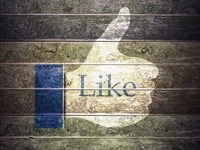
Subscribe & Follow
Advertise your job vacancies
Jobs
- Head of Digital Marketing Johannesburg
- Account Director Cape Town
- Accounts Receivable Manager Johannesburg
- Mid-Weight Copywriter Johannesburg
- Senior Account Director Johannesburg
- Event Support Cape Town
- Senior Growth Manager Johannesburg
- Internal Sales Administrator Cape Town
- Media Buying Consultant (Fixed-Term Contract) Johannesburg
- Media Relations Specialist Johannesburg
The Great Facebook Swindle
South African brands are being swindled into spending money, time and effort on Facebook because of the hype and encouragement spread by 'social media gurus' as well as the world's infatuation with this sexy medium.
However, the reality of brands' performance in this space shows that many are wasting their money and should reconsider their investment in building, maintaining and boosting their Facebook presence.
The problem, when it comes to Facebook, is that most brands do not know what should be regarded as 'succeeding' or 'failing'.

© Sondem - za.Fotolia.com
Social popularity
Numbers are often cited by the gurus to substantiate why brands need to be on Facebook, but let's look at two important numbers that are never mentioned:
- • South Africa's top 100 Facebook pages have a combined fan base of approximately 14,500,000 local fans; but these are not unique users, rather users who have liked multiple pages.• Of the 14 million multiple fans, there are only 324,000 fans engaging with brands; a miniscule 1.8% of the total SA Facebook community meaning that 98.2% of Facebook fan likes are not actively engaging with brands (this is down a full 1% from November 2013)
These figures illustrate a critical error that brands make: success = number of likes. It's equivalent to measuring how socially popular a person is by counting the amount of people they have met in their lifetime.
What would be more reliable of social popularity would be to measure the number of people with whom that person has a relationship with.
Similarly, on Facebook. If the FB relationship is equated to those who comment, or respond when prodded, or share posts, you'd get a more meaningful picture of engagement, or relationship.
Talking About This
So, for a Facebook page, you'd divide the Talking About This figure by the total community size to obtain percentage engagement.
Most South African Facebook pages sit at just under 2% engagement (November 2103 - 2.8%), with only 6 pages of the top 100 currently and consistently achieving above 5%. The majority languish way below acceptable norms.
Of those that pass and exceed the target benchmark of 10%, they are mostly boosted short-term through advertising and competitions which drive new likes, directly affecting the Talking About numbers, and falsely inflating engagement. This makes the activity seem positive when, in fact, actual engagement within the community is low and hidden from inspection.
Furthermore, Facebook's Edge Rank (which doesn't actually exist but we use the term to identify a combination of algorithms which Facebook uses to control its content philosophy) ensures users do not get bombarded with information from brands or people who they have friended or liked, but do not engage with often. It sends them content from those people they interact with more often.
Content for your target market
Each Facebook post is actually only exposed to between 3% and 14% of your community. This is why it is important to ensure higher engagement on posts, as well as posting more than once a day. To boost exposure, there should be between two and three posts a day, depending on content and community. Before November 2013, most South African brands posted only once a day, if that. Today, the average is at 1.9 posts a day; an improvement in my opinion.
Importantly, brands need to push less brand advertising and become more content creators around lifestyle issues related to the brand. If the content is right, it will be shared - which is the ultimate viral objective, yet too much of the content being produced is weak and non-engaging.
Oh, and Likes growth averages 6%. However, 58% of pages are growing at 5% or under, showing fewer brands are putting budget behind growth.
Here is a list of five questions every marketer should ask to determine how well (or not) the brand is doing on Facebook:
- 1. How good is the content and is it producing engagement rates of no less than 10%?
2. How well is the content being published (post length, post time, visual aids, etc)?
3. How well are the administration basics being handled (response rate, milestones, about sections, competitions, and so on)?
4. Is the page being measured, tracked and evaluated - what reporting tools are being used, what insights are being pulled and how is, what is and isn't working being evaluated?
Science to social media
So, the question going begging is, is social media a waste of time, or is it a viable communication channel available to brands for achieving real tangible business objectives?
The answer is most certainly no to the former and yes to the latter. However, there is a science to social media, one that the vast majority of the marketing community seem blissfully unaware of.
There needs to be more accountability for performance and more informed brands demanding more acceptable levels of performance. If not, there is no point for brands to be on social media, as merely having a presence doesn't generate the business results which brands need.












